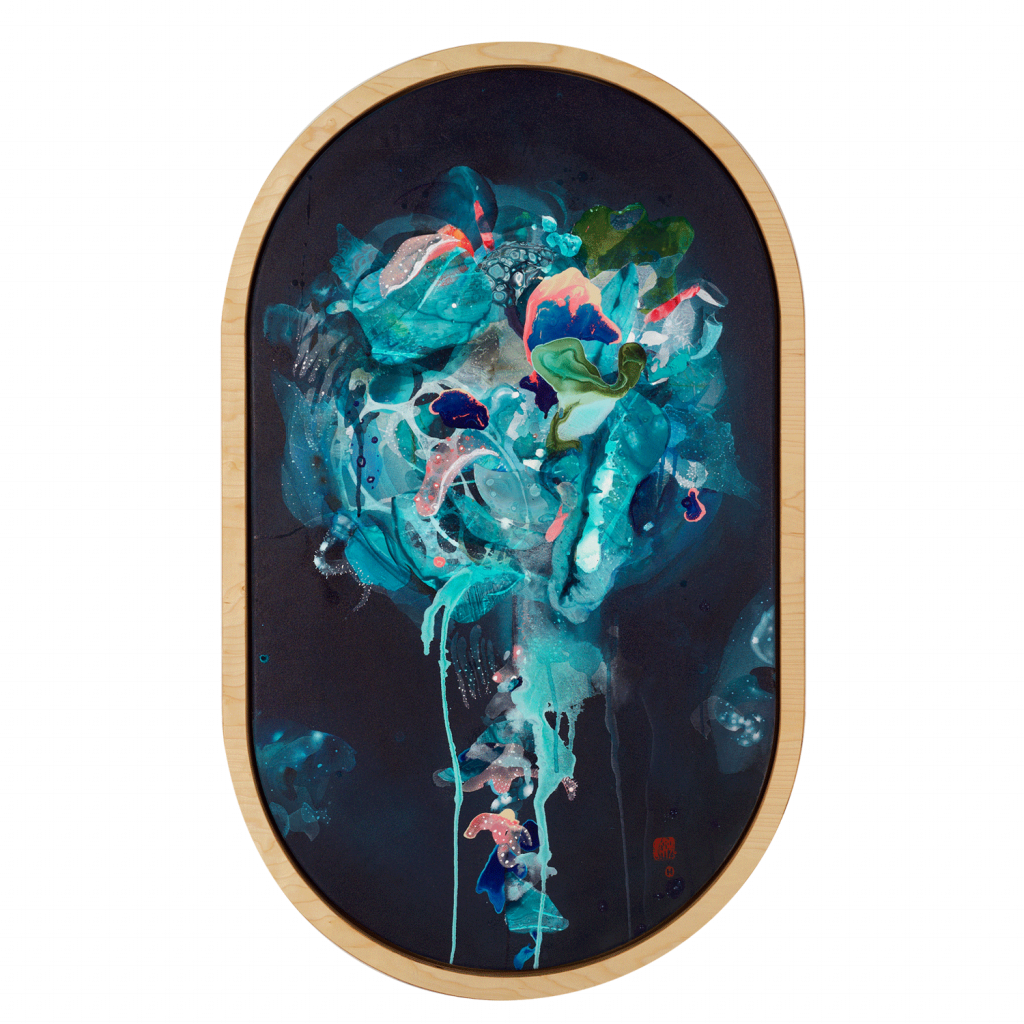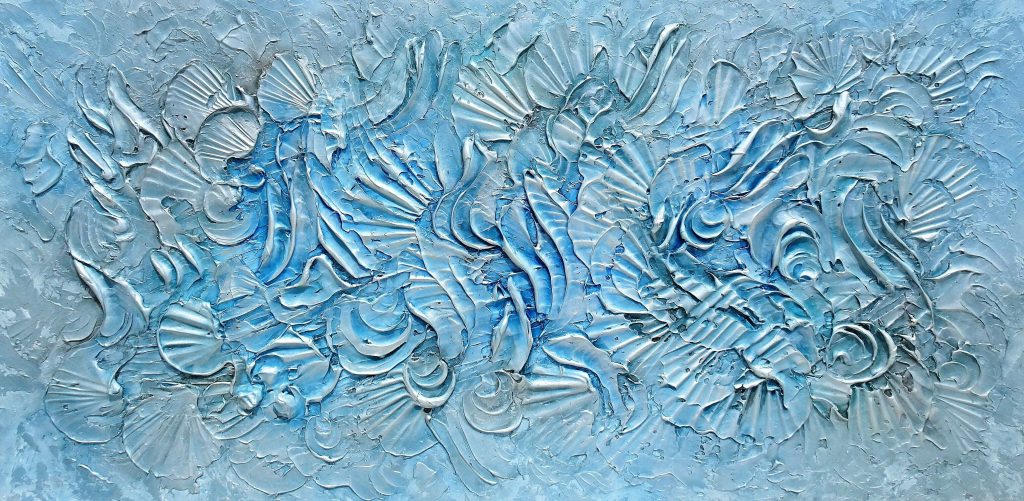An Artist’s & Collector’s Guide to Acrylic Paintings
Quick Facts:
- Artists have widely used acrylics since the 1960s. They are known for their vibrancy, versatility, and speedy drying time.
- A water-based medium, artists can apply acrylics in thin washes to create visual effects that resemble watercolors or thick layers of paint to mirror oil paintings.
- Acrylic artworks are easy to care for – give it a light dust occasionally.

The fluid effect in Amanda Krantz’s artwork is achieved with acrylic paint. “I started using oils but switched to acrylics about 12 years ago when I discovered their versatility,” says Amanda. “It was around the time that paint technology was advancing, and companies such as Golden, Matisse, and Liquitex had begun releasing an array of media. Globally, artists started experimenting with these—that’s when things really got fun!”
Acrylic Paintings for Artists
Without going too far down the science rabbit hole, acrylic is a water-based fast-drying paint that uses synthetic resin to bind pigments. Widely used by artists since the 1960s, acrylics become water-resistant once dry.

This wall features seascapes by Katie Wyatt, one of Bluethumb’s bestselling artists (who, coincidentally, loves working with acrylic!)
Whether you’re pressed for time or love the feeling of creating swiftly, acrylics are the perfect medium when time is of the essence. The room to modify the appearance of acrylics is expansive – painters can easily tweak the texture, hardness, and overall appearance by adding more or less water. In this way, an acrylic painting might resemble a watercolor painting or show the thickness of an oil piece. Therefore, applying acrylic paint may involve thin layers or washes to create effects of the delicate nature of watercolor or thickening agents and gels to bring oil-like thickness to a painting.

Sviatlana Osborne embraces the medium’s buildable, textural quality in her artworks. “Rendered in hues of blue, gray, teal, aqua, champagne, and silver, it offers a captivating visual journey.”
Because of their unique artistic practice, many artists find freedom in using acrylics. The medium’s usability on various surfaces, combined with its versatility in texture, gives a painter a broad scope of possibilities.
Additionally, many artists often praise the hues acrylics can achieve. “Oil painting lends itself to extreme darks and lights, with not much in between. When I use acrylic paint, the outcomes tend to be much lighter and freer flowing, bestselling landscape artist Meredith Howse explains.

Popular American artist Novi Lim uses light washes of acrylic paint to create silky tones and soft forms in her signature fluid abstracts.
A good varnish should always be thepièce de résistance to any acrylic painting. Varnishing your artwork not only protects it from yellowing, UV rays, and dust; it also pulls the painting together by adding a little layer of shine and bringing out those vibrant hues from the paint.
Acrylic Paintings for Collectors
While it may be a relatively young medium, acrylics’ resourceful nature lends itself to varying qualities that are as appealing for collectors as they are for artists. Visually intense, they create new sensory experiences for first-time buyers and experienced collectors alike.

Kate Gradwell’s Lakeside Study shows acrylic paint on watercolor paper, which flawlessly complements the subject matter. “I paint in both oils and acrylics. I love acrylic paint for its versatility and speed of drying. It’s so easy to create transparent glazes and experiment.”
Because artists have the liberty to change the thickness of acrylics with water or gels, the texture, application process, and consequent appearance vary greatly from painting to painting or artist to artist. Artists such as Katie Wyatt distinctively use acrylic paints to bring thick, heavy texture to a piece; others, like abstract artist Karen Hale, employ acrylics to create flow with a watery, dreamlike form.

Californian-based artist Karen Hale demonstrates the fun and flexible side of working with acrylics in her recent artwork titled Exploration.
How to Care for Your Acrylic Artwork
So, let’s say you’ve found the acrylic piece that’s right for you. Cleaning an artwork might seem like a bit of maintenance, but acrylics are easy to take care of. Plus, a little TLC will keep it looking swish for years to come!
“I would always recommend checking if the painting is varnished when purchasing – it’s that little bit easier to clean if so, and gives it so much more of a lifespan. Framing the piece will also help preserve it,” Bluethumb curator Sarah advises. “If you want to keep it looking fresh, give it a bit of a dust from time to time; I’d steer away from water, though, as this can change the appearance of the paint. It doesn’t take much effort and keeps that wall candy looking like new!”
Ready to find that perfect piece? Click here to explore our recent art curation for the first-time buyer.








